Living With Intention Through Minimalism: A Clear Guide
Category: Lifestyle
Embrace Clarity and Purpose by Living With Intention Through Minimalism
If you've found yourself overwhelmed by clutter—not just physical, but mental and emotional—and are searching for a meaningful way to regain control, you're in the right place. Whether you're a beginner curious about minimalism or someone who has tried simplifying before but struggled to maintain it, this guide will offer you practical, insightful strategies to live with intention through minimalism. This post isn't about trendy decluttering challenges or quick fixes; it's a thoughtful, actionable roadmap tailored for individuals eager to simplify their lives, focus on what truly matters, and move beyond consumer distractions for lasting fulfillment.
You likely arrived here because you want more than just tidying up; you want a lifestyle shift that empowers you to prioritize your values, goals, and well-being. This article stands apart by weaving intention into minimalism—helping you understand not only what to remove but why, and how to cultivate lasting mindful habits that align with your true purpose. Keep reading to explore a structured journey to declutter your environment and mind, adopt purposeful choices, and create a simpler, more fulfilling life that reflects who you really are.
- Embrace Clarity and Purpose by Living With Intention Through Minimalism
- Understanding Intentional Living
- The Core Principles of Minimalism: Simplicity, Functionality, and Mindful Consumption
- Evaluating Your Values and Priorities: Identifying What Truly Matters
- Decluttering with Intention: Practical Steps to Thoughtfully Reduce Physical and Digital Clutter Based on Your Values
- Mindful Consumption Habits: Strategies to Avoid Impulse Buying and Make Purchasing Decisions Aligned with Your Goals
- Simplifying Daily Routines: Techniques for Creating Streamlined, Meaningful Routines That Reduce Stress and Increase Productivity
- Creating Intentional Spaces: Designing Your Living and Work Areas to Support Clarity, Calmness, and Focus
- Sustaining Minimalism Through Mindset Shifts: Cultivating Habits and Perspectives That Keep Intentional Living Sustainable Long-Term
- Overcoming Challenges in Intentional Minimalism: Addressing Emotional Attachments and Societal Pressures
- Integrating Relationships and Experiences: Prioritizing Meaningful Connections Over Material Accumulation
Understanding Intentional Living
At its core, intentional living means making conscious choices that reflect your deepest values, goals, and priorities. It is a deliberate practice of aligning your actions with your sense of purpose rather than passively reacting to life’s demands or distractions. This mindset encourages thoughtful decision-making in every aspect—from how you spend your time and energy to what possessions you welcome into your space. Unlike aimless routines or impulsive habits, living intentionally fosters clarity, focus, and a profound sense of fulfillment.
This philosophy naturally complements minimalist principles, where the emphasis is on simplifying life by removing excess—whether it’s unnecessary belongings, obligations, or mental clutter—to make room for what truly matters. Minimalism isn’t about deprivation but about curating your life with intention: owning fewer things because each item has a meaningful role, choosing commitments that align with your values, and embracing a lifestyle driven by purpose rather than consumption. By integrating intentional living with minimalism, you create a powerful synergy that helps you:
- Identify your core values and express them through intentional choices.
- Reduce distractions and focus on meaningful activities.
- Cultivate mindful awareness to prevent automatic, unreflective habits.
- Build a clutter-free environment that supports your goals and well-being.
- Experience deeper satisfaction by prioritizing quality over quantity.
Living with intention through minimalism transforms simplifying from an external task into an internal practice—one that guides you toward a life of clarity, authenticity, and lasting contentment.
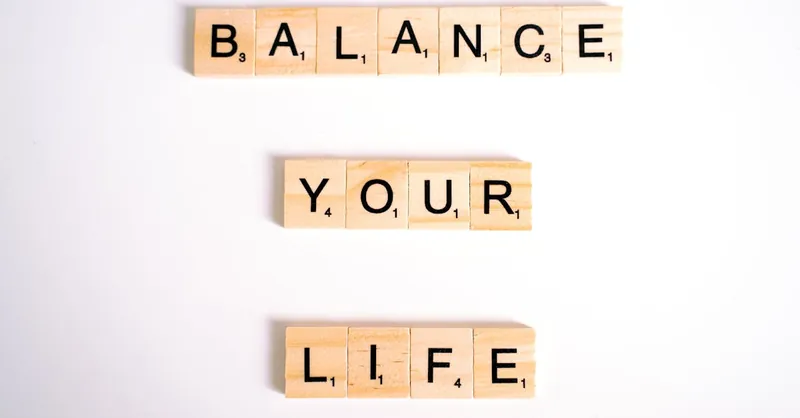
Image courtesy of Anna Tarazevich
The Core Principles of Minimalism: Simplicity, Functionality, and Mindful Consumption
At the heart of minimalism lie several foundational principles that guide us toward a life of greater clarity and intentionality. Understanding and embracing these core concepts can help you create a sustainable minimalist lifestyle that goes well beyond just decluttering physical spaces. The first principle, simplicity, encourages stripping away excess to reveal what is truly essential. This goes beyond just possessions; it includes simplifying commitments, digital distractions, and mental noise. By prioritizing simplicity, you create breathing room in your life—space that opens up opportunities for deeper connection, creativity, and peace.
Closely tied to simplicity is the principle of functionality. Minimalism values objects, practices, and environments that serve a clear purpose. Each item in your home or routine should add value, whether practical or emotional, rather than existing out of habit or accumulation. Functionality ensures that your surroundings support your lifestyle goals instead of complicating them. When everything around you has a reason for being, it becomes easier to focus on what truly matters.
Lastly, mindful consumption is a crucial pillar of minimalism that promotes intentional decision-making regarding what you bring into your life. Instead of mindless buying driven by impulse or societal pressure, mindful consumption asks you to reflect on the real need, quality, and longevity of each purchase or commitment. This practice reduces waste, saves resources, and nurtures contentment by helping you appreciate what you already own. Together, these principles of simplicity, functionality, and mindful consumption form a powerful framework for living with intention—helping you cultivate a life that is not just less cluttered, but more meaningful and aligned with your values.
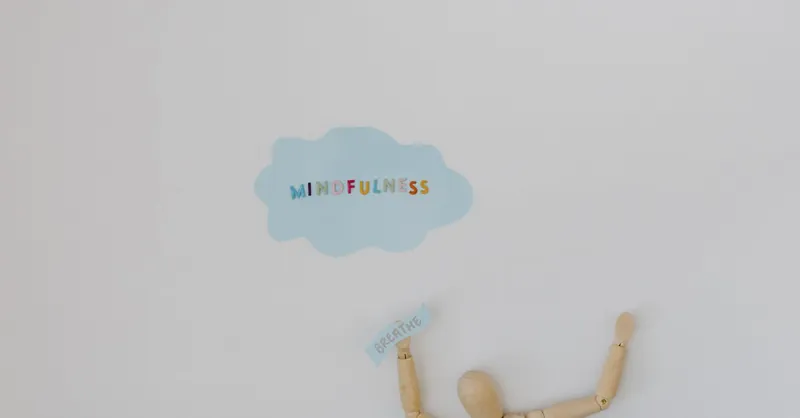
Image courtesy of Tara Winstead
Evaluating Your Values and Priorities: Identifying What Truly Matters
To effectively live with intention through minimalism, the essential first step is evaluating your personal values and priorities. This introspective process helps you pinpoint what genuinely matters in your life, enabling you to curate a lifestyle that reflects your authentic self rather than external expectations or fleeting trends. Without a clear understanding of your core values, minimalism can become a superficial exercise in decluttering rather than a transformative shift toward purposeful living.
Start by asking yourself meaningful questions such as:
- What activities, relationships, or goals bring me genuine joy and fulfillment?
- Which possessions or habits align with my long-term vision for a meaningful life?
- Where do I want to invest my time, energy, and resources to feel most alive and satisfied?
Once you have identified your values, prioritize them by considering their impact on your well-being and growth. This clarity acts as a compass, guiding every minimalist decision—from what to keep in your home to how you manage your daily commitments. A practical approach includes:
- Listing your top 5–7 core values (e.g., family, creativity, health, freedom).
- Evaluating current possessions and obligations against these values—do they support or detract from what matters most?
- Eliminating or minimizing items and distractions that do not resonate with your prioritized values.
- Setting intentional goals and boundaries based on these priorities to cultivate consistency and prevent future accumulation of unnecessary clutter.
By grounding your minimalism in a deeply personal value system, you transform simplifying your environment into a meaningful journey that nurtures clarity, focus, and purposeful living. This alignment not only improves decision-making but also fosters lasting satisfaction by ensuring that every choice contributes to a life well-lived.
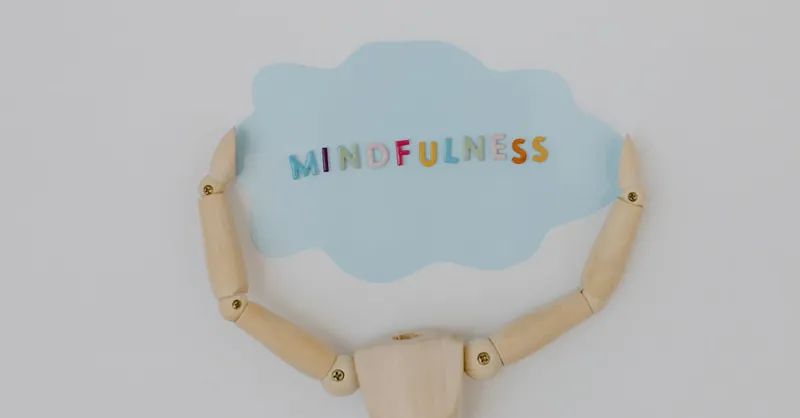
Image courtesy of Tara Winstead
Decluttering with Intention: Practical Steps to Thoughtfully Reduce Physical and Digital Clutter Based on Your Values
Decluttering is a foundational practice in living with intention through minimalism, but it goes beyond simply getting rid of excess—it requires a thoughtful, value-driven approach that ensures what remains truly supports your well-being and goals. Both physical and digital clutter can drain your energy and focus, making it essential to methodically evaluate possessions and information through the lens of your core values. When you declutter with intention, every item you choose to keep or remove becomes an expression of your authentic priorities and lifestyle vision.
Start with a Clear Framework Based on Your Values
Before diving into decluttering, revisit your identified values and priorities from the previous step. Use these as your decluttering criteria:
- Ask yourself: Does this item or digital file serve a practical, emotional, or meaningful purpose aligned with my values?
- Consider frequency and joy: When was the last time I used or appreciated this? Does it still bring joy or utility?
- Evaluate the cost-benefit: Does this possession or digital asset add complexity or simplify my life?
Practical Tips to Declutter Thoughtfully and Sustainably
- Physical Decluttering:
- Break your space into manageable zones (e.g., wardrobe, kitchen, workspace).
- Use the "Four-Box Method": Label boxes as Keep, Donate, Sell, and Trash to categorize items decisively.
- Prioritize quality over quantity by choosing to keep only those things that enhance functionality and happiness.
-
Be patient—intentional decluttering is a process, not a race.
-
Digital Decluttering:
- Organize emails by unsubscribing from unnecessary lists and deleting or archiving old messages.
- Clean up your desktop and digital folders by removing duplicate files and deleting apps or programs you no longer use.
- Limit notifications to reduce digital distractions and consciously schedule times for checking social media or emails.
- Regularly backup important data and streamline your cloud storage to avoid digital overwhelm.
By integrating these practical strategies with your personal value system, you create a clutter-free environment that nurtures clarity and focus. This intentional decluttering not only frees up physical space but also reduces mental overload, empowering you to live purposefully and make room for experiences and relationships that truly matter.

Image courtesy of RDNE Stock project
Mindful Consumption Habits: Strategies to Avoid Impulse Buying and Make Purchasing Decisions Aligned with Your Goals
One of the greatest challenges in living with intention through minimalism is cultivating mindful consumption habits that prevent impulse purchases and keep you focused on what truly aligns with your values and goals. In a consumer-driven world saturated with constant advertisements and instant gratification, it's easy to fall into reactive buying patterns that add clutter, drain finances, and distract from purposeful living. Developing intentional purchasing practices not only safeguards your minimalist lifestyle but also nurtures financial well-being, reduces waste, and deepens your appreciation for what you already own.
To foster mindful consumption, start by implementing a pause-and-reflect strategy before every purchase:
- Pause for 24-48 hours to evaluate whether the item supports your core values and long-term priorities.
- Ask critical questions:
- Do I genuinely need this, or is it an emotional reaction?
- Will this add meaningful value or simply occupy space?
- Can this be borrowed, repaired, or replaced by something I already own?
- Consider quality and longevity over quantity or trends—choose items designed to last and bring lasting satisfaction.
- Set specific spending limits and budget categories that align with your life goals, ensuring that your purchases reflect purposeful investments rather than mindless consumption.
- Limit exposure to marketing triggers by unsubscribing from promotional emails, avoiding endless browsing on shopping apps, and being selective about social media content that encourages materialism.
Incorporating these mindful consumption habits will empower you to make purchasing decisions that truly honor your minimalist values, reduce clutter before it enters your life, and pave the way toward intentional spending that creates freedom, not excess. Ultimately, adopting a thoughtful, goal-aligned mindset around buying strengthens your commitment to living a simpler, more purposeful life where possessions serve meaning, not distraction.
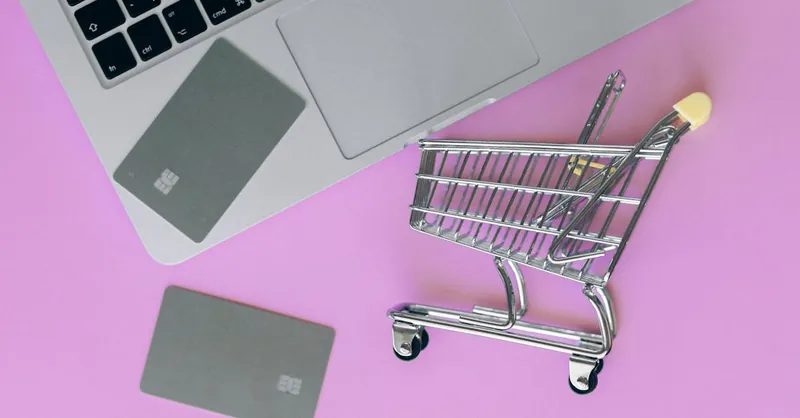
Image courtesy of Nataliya Vaitkevich
Simplifying Daily Routines: Techniques for Creating Streamlined, Meaningful Routines That Reduce Stress and Increase Productivity
Living with intention through minimalism extends beyond decluttering physical and digital spaces; it encompasses how you design your daily routines to promote clarity, efficiency, and well-being. Simplifying daily routines means intentionally crafting habits and schedules that align with your values and eliminate unnecessary complexity, which in turn reduces stress and boosts productivity. When routines are thoughtful and purposeful, you reclaim time and mental energy for what truly matters.
Key Techniques to Streamline Your Daily Life
-
Prioritize Essential Tasks Based on Your Values
Focus your daily actions on activities that directly support your core values and goals. Use a simple daily or weekly planner to list and prioritize these essential tasks, avoiding overcommitment and distraction. -
Batch Similar Activities Together
Grouping related tasks—such as answering emails, meal prepping, or household chores—minimizes decision fatigue and improves focus. This technique allows you to complete activities more efficiently, freeing time for restorative or meaningful pursuits. -
Create Intentional Morning and Evening Rituals
Designing consistent, calming routines to start and end your day promotes mindfulness and sets the tone for productivity. Mornings might include meditation, light exercise, or focused planning, while evenings could focus on reflection, digital detox, or simple relaxation habits. -
Limit Multitasking to Enhance Presence and Quality
Commit to doing one task at a time with full attention to reduce errors and mental clutter. Single-tasking supports deeper engagement and makes your routines more fulfilling and effective. -
Establish Clear Boundaries for Work and Rest
To prevent burnout and maintain balance, set specific times for work, breaks, and leisure. Intentional boundaries help you fully immerse in each part of your day without overlap or guilt.
By simplifying daily routines with intentional design, you not only cut down on unnecessary hustle and overwhelm but also create a lifestyle where every moment serves your purpose. This practice deepens your minimalist journey by transforming how you live each day, fostering sustained productivity and profound satisfaction.
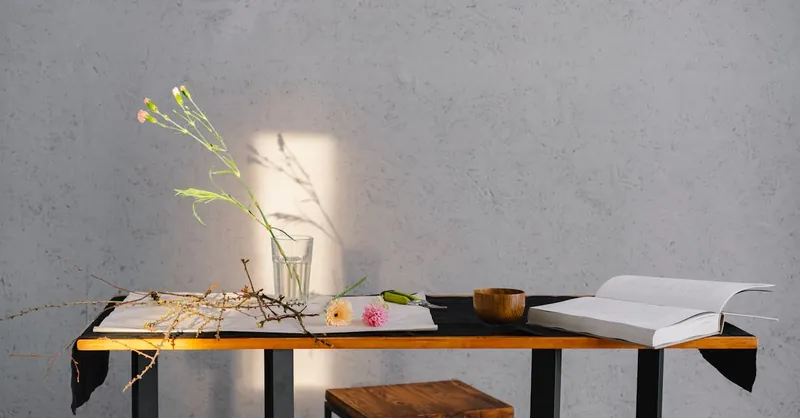
Image courtesy of Mikhail Nilov
Creating Intentional Spaces: Designing Your Living and Work Areas to Support Clarity, Calmness, and Focus
A crucial aspect of living with intention through minimalism is curating physical environments that actively support your mental clarity, emotional calmness, and focused productivity. Whether it’s your home, workspace, or any area where you spend significant time, intentional design removes visual and physical distractions, fosters peace, and ultimately enhances your ability to engage deeply with what matters most. Designing intentional spaces is not about aesthetic trends but about crafting surroundings that reflect your values and cultivate a sense of well-being.
To create these purposeful spaces, focus on three key elements:
-
Simplicity in Layout and Furnishings
Choose furniture and decor that have clear function and purpose. Avoid overcrowding rooms with unnecessary items; instead, embrace open areas that allow movement and breathing space. Neutral colors, clean lines, and natural light can amplify feelings of peace and openness, promoting calmness and reducing mental clutter. -
Mindful Organization and Storage
Every object should have a designated place that is easy to access and maintain. Use simple storage solutions such as baskets, drawers, or shelves to keep surfaces clear and prevent accumulation of clutter. Organized spaces reduce decision fatigue and allow your mind to focus rather than constantly scan for misplaced items. -
Personal Touches that Encourage Positivity and Focus
Incorporate a few meaningful items that inspire or ground you—this could be a favorite piece of artwork, plants that bring nature indoors, or tools that support your productivity and creativity. These elements turn minimalist spaces into personalized sanctuaries, nurturing motivation without overwhelming sensory input.
By intentionally designing your living and work areas with these principles, you transform your environment into a powerful ally for mindfulness and purposeful living. This thoughtful spatial approach enhances both your emotional well-being and your ability to concentrate, enabling you to move through your day with intentionality and ease—core outcomes of embracing minimalism as a lifestyle.
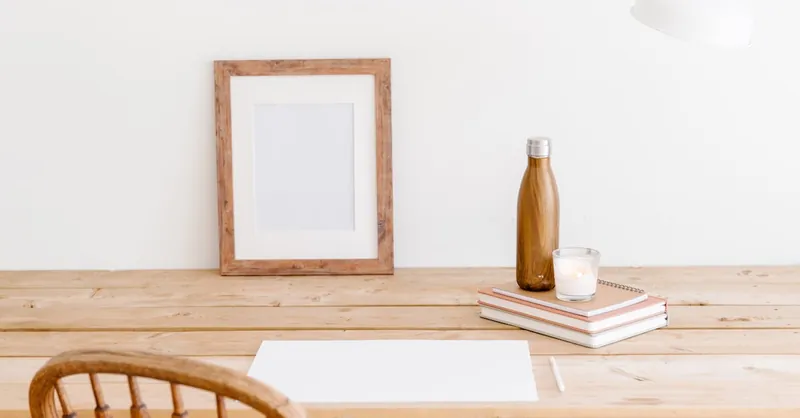
Image courtesy of PNW Production
Sustaining Minimalism Through Mindset Shifts: Cultivating Habits and Perspectives That Keep Intentional Living Sustainable Long-Term
Embracing minimalism is more than a one-time decluttering effort; it is an ongoing mindset shift that reinforces your commitment to intentional living and guards against slipping back into old patterns of accumulation and distraction. To sustain minimalism over the long haul, it’s crucial to cultivate habits and perspectives that continually align your lifestyle with your core values and simplify your relationship with possessions, time, and mental space. These mindset shifts empower you to see minimalism not as a restrictive set of rules but as an enriching framework for meaningful, balanced living.
Key Mindset Shifts for Sustained Intentional Living
-
Adopt a Growth Mindset Around Simplification
View minimalism as a dynamic journey rather than a fixed destination. This means embracing flexibility and self-compassion when setbacks happen, understanding that intentional living evolves with your changing needs and priorities. -
Prioritize Quality of Life Over Quantity of Things
Continuously remind yourself that fewer possessions and commitments make space for richer experiences, deeper relationships, and authentic fulfillment. This perspective discourages unnecessary consumption and promotes contentment with less. -
Practice Regular Reflection and Reassessment
Schedule periodic check-ins to evaluate whether your possessions, habits, and commitments still support your values. Intentional living thrives on consistent awareness, helping you course-correct before clutter or distraction accumulate again. -
Cultivate Gratitude and Presence
By mindfully appreciating what you already have and focusing on the present moment, you reduce the urge to accumulate or chase after material fixes for happiness. Gratitude nurtures satisfaction and a deep-rooted sense of enough. -
Embed Minimalism Into Your Identity
Make intentional living a core part of how you see yourself rather than a temporary project. When minimalism becomes integral to your self-concept, maintaining it transforms from effortful discipline into natural expression.
By integrating these mindset shifts with practical habits such as mindful purchasing, intentional decluttering, and simplified routines, you create a resilient foundation for long-term minimalist living. This holistic approach ensures that minimalism remains a sustainable, fulfilling lifestyle—one that consistently supports your clarity, purpose, and well-being amidst life’s inevitable changes.
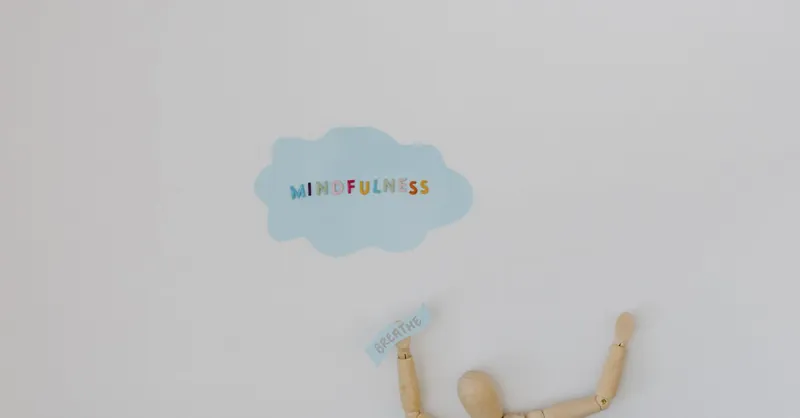
Image courtesy of Tara Winstead
Overcoming Challenges in Intentional Minimalism: Addressing Emotional Attachments and Societal Pressures
Embarking on a minimalist lifestyle rooted in intention is deeply rewarding but often comes with common challenges that can hinder progress if left unaddressed. Emotional attachments to possessions and societal pressures to conform to consumer culture frequently act as significant roadblocks, making it difficult to maintain clarity and focus on your values. Recognizing and proactively managing these challenges is essential to creating a sustainable minimalist path that truly supports your well-being and intentional living goals.
Navigating Emotional Attachments to Possessions
Many items in our lives hold sentimental value or are intertwined with memories, relationships, or identity. This emotional connection can make decluttering feel overwhelming or even guilt-inducing. To overcome this, practice mindful detachment by:
- Reflecting on the true role of the item in your present life—does it actively contribute to your joy, purpose, or daily functionality?
- Preserving memories through alternative means—photographs, journaling, or sharing stories—rather than holding on to physical objects that no longer serve you.
- Setting compassionate boundaries—allow yourself to keep a small, meaningful collection while committing to releasing the excess that clouds clarity.
- Accepting that your identity is fluid and not dependent on material things; growth sometimes means letting go of items tied to past versions of yourself.
This approach transforms emotional attachment from a barrier into a conscious choice aligned with your minimalist intentions.
Managing Societal and Cultural Pressures
Living intentionally through minimalism often means swimming against the current of societal norms that prioritize consumerism, status, and constant acquisition. These external pressures can trigger self-doubt, comparison, or fear of missing out, undermining your minimalist commitment. To address this, consider these strategies:
- Cultivate a supportive community of like-minded individuals or minimalism advocates who validate your lifestyle and provide encouragement.
- Limit exposure to media and advertising that promote materialism by curating your social media feeds and being selective about the content you consume.
- Reframe success and happiness in terms of personal fulfillment, relationships, and experiences rather than possessions or appearances.
- Set clear personal intentions and reminders that anchor you when external pressures arise, reinforcing your values over societal expectations.
By consciously addressing emotional and societal challenges, you strengthen your resolve and create a minimalist lifestyle that withstands external influences and internal resistance. This proactive mindset is key to sustaining intentional living and reaping the profound benefits minimalist simplicity offers.
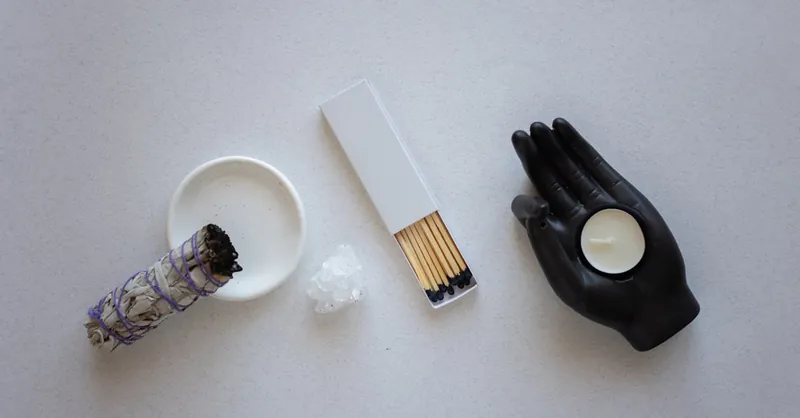
Image courtesy of KATRIN BOLOVTSOVA
Integrating Relationships and Experiences: Prioritizing Meaningful Connections Over Material Accumulation
Living with intention through minimalism extends naturally beyond possessions—it invites a profound shift in how you value and nurture relationships and life experiences. Rather than measuring fulfillment by the quantity of things you own, this minimalist approach encourages you to invest deeply in connections that enrich your emotional well-being and create lasting memories. Prioritizing meaningful relationships and experiences aligns directly with your core values, cultivating a sense of belonging, joy, and purpose that material accumulation cannot provide.
Why Focus on Relationships and Experiences?
- Experiences foster long-term happiness: Research consistently shows that shared moments and new experiences contribute more to lasting happiness than acquiring objects. Memories of time spent with loved ones or personal growth adventures build a richer, more fulfilling life tapestry.
- Meaningful connections support emotional health: Deep relationships nurture support, empathy, and authenticity, essential for mental well-being and resilience. Minimalism creates the space needed to prioritize and maintain these connections without distraction.
- Experiences often require less physical space and resources: Unlike belongings that demand storage and upkeep, investing in quality time or learning opportunities keeps your life uncluttered while maximizing value.
Practical Ways to Center Your Minimalist Life Around Relationships and Experiences
- Design your calendar intentionally: Allocate dedicated time for family, friends, and community engagements that resonate with your values. Treat these moments as non-negotiable priorities rather than optional extras.
- Choose experiential gifts: When giving presents, opt for experiences such as workshops, concerts, or shared outings rather than material goods, reinforcing the value of connection over consumption.
- Create traditions and rituals: Cultivate simple, meaningful rituals—like weekly dinners, monthly hikes, or morning coffee chats—that deepen bonds and create joyful anticipation.
- Practice presence and active listening: Minimizing distractions during interactions enhances the quality of your relationships, making each encounter more fulfilling and memorable.
- Document and cherish memories mindfully: Use photos, journals, or creative outlets to capture experiences, allowing you to revisit and appreciate them without accumulating physical clutter.
By consciously integrating relationships and experiences into your minimalist journey, you shift the focus from owning more to living richer. This intention-driven approach fosters emotional fulfillment, reduces reliance on material possessions for happiness, and strengthens your connection to yourself and others—core goals of purposeful, minimalist living.
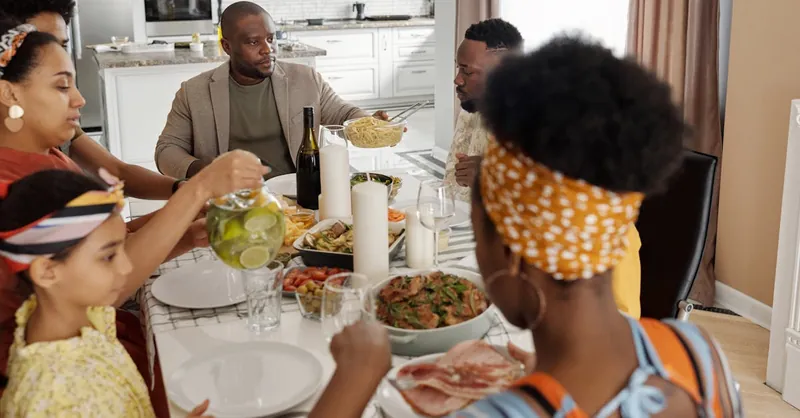
Image courtesy of August de Richelieu
